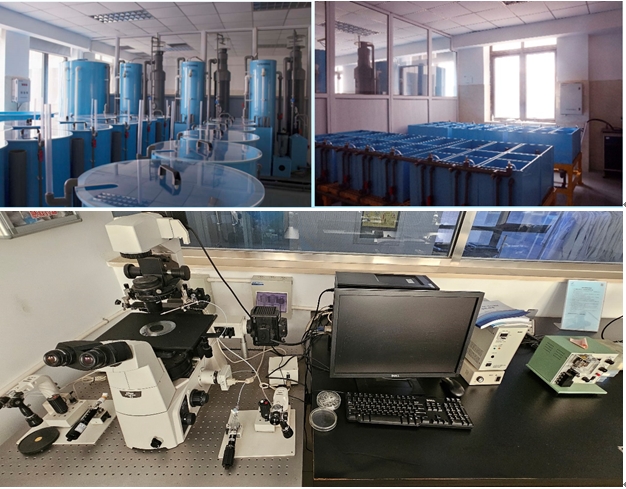团队依托亚洲区域卤虫参考中心,围绕海洋和高盐水环境特色生物资源的生物学基础研究和应用技术,在卤虫种质资源开发利用(卤虫群体遗传结构与多样性研究、种质资源评价体系建立和种质提升、卤虫卵去休眠加工及其在水产育苗中有效应用关键技术、卤虫活性物质开发利用)、卤虫实验生物学研究平台构建、海洋和嗜盐微生物活性物质代谢调控、发酵关键技术及其在大健康领域中的应用等方面形成特色和优势。
团队承担FAO资助项目、科技部国际科技合作计划项目、外国专家局引智项目、国家自然科学基金、天津市科技局科技支撑重点项目等纵向科研项目,与多家卤虫卵生产企业和水产养殖企业开展横向科研合作。在全国范围内组织行业卤虫专业培训班,牵头制定国家水产行业标准2项,开展西藏盐湖生物资源调查和高原卤虫资源开发利用研究,服务卤虫行业健康发展和国家“科技援藏”计划。团队现有固定人员8人。
代表性成果:(代表性项目、论文、获奖各限5项)等
1.代表性科研项目
(1)NSFC,西藏卤虫应对青藏高原盐湖极端环境的适应性进化机制研究
(2)NSFC,嗜盐古菌菌红素合成机制及“正反”双向代谢调控研究
(3)天津市科技计划项目,基于卤虫种质库的卤虫资源评价及利用
(4)运城盐湖卤虫资源可持续开发与保护利用
(5)农业农村部渔业援藏项目(2019—至今)
2.代表性论文
(1) Van Stappen G, Sui LY, Hoa NV, Tamtin M, Nyonje B, Renato de Medeiros Rocha Sorgeloos P, Gajardo G. 2019. Review on integrated production of the brine shrimp Artemia in solar salt ponds. Review in Aquaculture, 12: 1054-1071.
(2) Gao MR, Du DD, Bo AX, Sui LY*. 2019. Poly-β-hydroxybutyrate (PHB)-accumulating Halomonas improves the survival, growth, robustness and modifies the gut microbial composition of Litopenaeus vannamei postlarvae. Aquaculture, 500: 607-632.
(3) Han XK, Zheng YY, Sui LY*. 2020. Effect of polystyrene microplastics and temperature on growth, intestinal histology, and immune responses of brine shrimp Artemia franciscana. Journal of Oceanology and Limnology, 39(3): 979-988.
(4) Duan H, Shao XX, Liu W, Xiang JH, Pan NM, Wang XH, Du GR, Li Y, Zhou JP, Sui LY*. 2023. Spatio-temporal patterns of ovarian development and VgR gene silencing reduced fecundity in parthenogenetic Artemia. Open Biology, 13(11): 1-14.
(5) Ma YC, Sun ZS, Yang H, Xie W, Song MY, Zhang B, Sui LY*. 2024. The biosynthesis mechanism of bacterioruberin in halophilic archaea revealed by genome and transcriptome analysis. Applied and Environmental Microbiology, 90(7): e00540-24.
3. 授权专利
(1)一株盐红菌Halorubrum sp. HRM-150菌株及其发酵生产类胡萝卜素的方法,ZL2019 1 0463640.9.
(2)一株PHBd-1菌株及其应用,ZL2018 1 1410585.9.
(3)红色嗜盐古菌盐红菌菌株及其强化卤虫在水产育苗或养殖中的应用,ZL2020 1 1060623.X.
(4)一株盐单胞菌100-16-2及盐单胞菌100-16-2制备聚3-羟基丁酸酯的方法,ZL2018 1 1410570.2.
(5)一种充分利用孵化水体的卤虫卵高密度方法.ZL2020 1 1504722.2.
4.奖项与其它
(1)获得第二届全国博士后创新大赛金奖
(2)主持修订《卤虫卵》行业标准、制定《冷冻卤虫成虫》行业标准
5. 50万元及以上大型仪器设备名称表述及部分代表性大仪照片

室内循环水系统与显微操作仪(Nikon+Narishige)
